Research Methods Past Questions 2022
Research Methods Past Questions 2022 Free Here
Are You finding it difficult to write your Research Methods Exams
CHECK THIS ONE ALSO: College of Education 2022/2023
Here are some probable research methods question from Professor, and Doctors holding PhD in Research Methods
LET’S JOIN ALL UNIVERSITY STUDENTS SESSIONtake your time to go through well
THERE ARE OVER 100 PAST QUESTION HERE
RESEARCH METHODS
1. Which of the following should not be a criterion for a good research project?
a) Demonstrates the abilities of the researcher
b) Is dependent on the completion of other projects
c) Demonstrates the integration of different fields of knowledge
d) Develops the skills of the researcher
Answer: b. Is dependent on the completion of other projects
2. Which form of reasoning is the process of drawing a specific conclusion from a set of premises?
a. Objective reasoning
b. Positivistic reasoning
c. Inductive reasoning
d. Deductive reasoning
Answer: d: Deductive reasoning
3. Research that seeks to examine the findings of a study by using the same design but a different sample is which of the following?
a. An exploratory study
b. A replication study
c. An empirical study
d. Hypothesis testing
Answer: b: A replication study
CHECK THIS ONE ALSO: College of Education 2022/2023
4. A researcher designs an experiment to test how variables interact to influence job-seeking behaviours. The main purpose of the study was:
a. Description
b. Prediction
c. Exploration
d. Explanation
Answer: d: Explanation
5. Cyber bullying at work is a growing threat to employee job satisfaction. Researchers want to find out why people do this and how they feel about it. The primary purpose of the study is:
a. Description
b. Prediction
c. Exploration
d. Explanation
Answer: c: Exploration
6. A theory:
a. Is an accumulated body of knowledge
b. Includes inconsequential ideas
c. Is independent of research methodology
d. Should be viewed uncritically
Answer: a: Is an accumulated body of knowledge
RESEARCH METHODS
7. Which research method is a bottom-up approach to research?
a. Deductive method
b. Explanatory method
c. Inductive method
d. Exploratory method
Answer: c: Inductive method
8. How much confidence should you place in a single research study?
a. You should trust research findings after different researchers have replicated the findings
b. You should completely trust a single research study
c. Neither a nor b
d. Both a and b
Answer: a: You should trust research findings after different researchers have replicated the findings
9. A qualitative research problem statement:
a. Specifies the research methods to be utilized
b. Specifies a research hypothesis
c. Expresses a relationship between variables
d. Conveys a sense of emerging design
Answer: d: Conveys a sense of emerging design
10. Which of the following is a good research question?
a. To produce a report on student job searching behaviours
b. To identify the relationship between self-efficacy and student job searching behaviours
c. Students with higher levels of self-efficacy will demonstrate more active job searching behaviours
d. Do students with high levels of self-efficacy demonstrate more active job searching behaviours?
Answer: d: Do students with high levels of self-efficacy demonstrate more active job searching behaviours?
CHECK THIS ONE ALSO: College of Education 2022/2023
11. A review of the literature prior to formulating research questions allows the researcher to
a. Provide an up-to-date understanding of the subject, its significance, and structure
b. Guide the development of research questions
c. Present the kinds of research methodologies used in previous studies
d. All of the above
Answer: d: All of the above
RESEARCH METHODS
12. Sometimes a comprehensive review of the literature prior to data collection is not recommended by:
a. Ethnomethodology
b. Grounded theory
c. Symbolic interactionism
d. Feminist theory
Answer: b: Grounded theory
CHECK THIS ONE ALSO: College of Education 2022/2023
13. The feasibility of a research study should be considered in light of:
a. Cost and time required to conduct the study
b. Access to gatekeepers and respondents
c. Potential ethical concerns
d. All of the above
Answer: d: All of the above
14. Research that uses qualitative methods for one phase and quantitative methods for the next phase is known as:
a. Action research
b. Mixed-method research
c. Quantitative research
d. Pragmatic research
Answer: b: Mixed-method research
15. Research hypotheses are:
a. Formulated prior to a review of the literature
b. Statements of predicted relationships between variables
c. B but not A
d. Both A and B
Answer: c: B but not A
16. Which research approach is based on the epistemological viewpoint of pragmatism?
a. Quantitative research
b. Qualitative research
c. Mixed-methods research
d. All of the above
Answer: c: Mixed-methods research
RESEARCH METHODS
17. Adopting ethical principles in research means:
a. Avoiding harm to participants
b. The researcher is anonymous
c. Deception is only used when necessary
d. Selected informants give their consent
Answer: a: Avoiding harm to participants
18. A radical perspective on ethics suggests that:
a. Researchers can do anything they want
b. The use of checklists of ethical actions is essential
c. The powers of Institutional Review Boards should be strengthened
d. Ethics should be based on self-reflexivity
Answer: d: Ethics should be based on self-reflexivity
19. Ethical problems can arise when researching the Internet because:
a. Everyone has access to digital media
b. Respondents may fake their identities
c. Researchers may fake their identities
d. Internet research has to be covert
Answer: b: Respondents may fake their identities
20. The Kappa statistic:
a. Is a measure of inter-judge validity
b. Compares the level of agreement between two judges against what might have been predicted by chance
c. Ranges from 0 to +1
d. Is acceptable above a score of 0.5
Answer: b: Compares the level of agreement between two judges against what might have been predicted by chance
PART B: RESEARCH METHODOLOGY
1. Which research paradigm is most concerned about generalizing its findings?
a. Quantitative research
b. Qualitative research
c. Mixed-methods research
d. All of the above
Answer: a: Quantitative research
2. A variable that is presumed to cause a change in another variable is called:
a. An intervening variable
b. A dependent variable
c. An independent variable
d. A numerical variable
Answer: c: An independent variable
3. A study of teaching professionals posits that their performance-related pay increases their motivation which in turn leads to an increase in their job satisfaction. What kind of variable is ‘motivation”’ in this study?
a. Extraneous
b. Confounding
c. Intervening
d. Manipulated
Answer: c: Intervening
4. Which correlation is the strongest?
a. –1.00
b. +80
c. –60
d. +05
Answer: a: –1.00
5. When interpreting a correlation coefficient expressing the relationship between two variables, it is important not to:
a. Assume causality
b. Measure the values for X and Y independently
c. Choose X and Y values that are normally distributed
d. Check the direction of the relationship
Answer: a: Assume causality
RESEARCH METHODS
6. Which of the following can be described as a nominal variable?
a. Annual income
b. Age
c. Annual sales
d. Geographical location of a firm
Answer: d: Geographical location of a firm
7. A positive correlation occurs when:
a. Two variables remain constant
b. Two variables move in the same direction
c. One variable goes up and the other goes down
d. Two variables move in opposite directions
Answer: b: Two variables move in the same direction
8. The key defining characteristic of experimental research is that:
a. The independent variable is manipulated
b. Hypotheses are proved
c. A positive correlation exists
d. Samples are large
Answer: a: The independent variable is manipulated
9. Qualitative research is used in all the following circumstances, EXCEPT:
a. It is based on a collection of non-numerical data such as words and pictures
b. It often uses small samples
c. It uses the inductive method
d. It is typically used when a great deal is already known about the topic of interest
Answer: d: It is typically used when a great deal is already known about the topic of interest
10. In an experiment, the group that does not receive the intervention is called:
a. The experimental group
b. The participant group
c. The control group
d. The treatment group
Answer: c: The control group
11. Which generally cannot be guaranteed in conducting qualitative studies in the field?
a. Keeping participants from physical and emotional harm
b. Gaining informed consent
c. Assuring anonymity rather than just confidentiality
d. Maintaining consent forms
Answer: c: Assuring anonymity rather than just confidentiality
12. Which of the following is not ethical practice in research with humans?
a. Maintaining participants’ anonymity
b. Gaining informed consent
c. Informing participants that they are free to withdraw at any time
d. Requiring participants to continue until the study has been completed
Answer: d: Requiring participants to continue until the study has been completed
13. What do we call data that are used for a new study but which were collected by an earlier researcher for a different set of research questions?
a. Secondary data
b. Field notes
c. Qualitative data
d. Primary data
Answer: a: Secondary data
14. When each member of a population has an equal chance of being selected, this is called:
a. A snowball sample
b. A stratified sample
c. A random probability sample
d. A non-random sample
Answer: c: A random probability sample
15. Which of the following techniques yields a simple random sample of hospitals?
a. Randomly selecting a district and then sampling all hospitals within the district
b. Numbering all the elements of a hospital sampling frame and then using a random number generator to pick hospitals from the table
c. Listing hospitals by sector and choosing a proportion from within each sector at random
d. Choosing volunteer hospitals to participate
Answer: b: Numbering all the elements of a hospital sampling frame and then using a random number generator to pick hospitals from the table
16. Which of the following statements are true?
a. The larger the sample size, the larger the confidence interval
b. The smaller the sample size, the greater the sampling error
c. The more categories being measured, the smaller the sample size
d. A confidence level of 95 percent is always sufficient
Answer: b: The smaller the sample size, the greater the sampling error
17. Which of the following will produce the least sampling error?
a. A large sample based on convenience sampling
b. A small sample based on random sampling
c. A large snowball samples
d. A large sample based on random sampling
Answer: d: A large sample based on random sampling
18. When people are readily available, volunteer, or are easily recruited to the sample, this is called:
a. Snowball sampling
b. Convenience sampling
c. Stratified sampling
d. Random sampling
Answer: b: Convenience sampling
19. In qualitative research, sampling that involves selecting diverse cases is referred to as:
a. Typical-case sampling
b. Critical-case sampling
c. Intensity sampling
d. Maximum variation sampling
Answer: d: Maximum variation sampling
20. A test accurately indicates an employee’s scores on a future criterion (e.g., conscientiousness). What kind of validity is this?
a. Predictive
b. Face
c. Content
d. Concurrent
Answer: a: Predictive
PART C: DATA COLLECTION METHODS
1. When designing a questionnaire it is important to do each of the following EXCEPT
a. Pilot the questionnaire
b. Avoid jargon
c. Avoid double questions
d. Use leading questions
Answer: d: Use leading questions
2. One advantage of using a questionnaire is that:
a. Probe questions can be asked
b. Respondents can be put at ease
c. Interview bias can be avoided
d. Response rates are always high
Answer: c: Interview bias can be avoided
3. Which of the following is true of observations?
a. It takes less time than interviews
b. It is often not possible to determine exactly why people behave as they do
c. Covert observation raises fewer ethical concerns than overt
d. All of the above
Answer: b: It is often not possible to determine exactly why people behave as they do
4. A researcher secretly becomes an active member of a group in order to observe their behaviour. This researcher is acting as:
a. An overt participant observer
b. A covert non-participant observer
c. A covert participant observer
d. None of the above
Answer: c: A covert participant observer
5. All of the following are advantages of structured observation, EXCEPT:
a. Results can be replicated at a different time
b. The coding schedule might impose a framework on what is being observed
c. Data can be collected that participants may not realize is important
d. Data do not have to rely on the recall of participants
Answer: b: The coding schedule might impose a framework on what is being observed
6. When conducting an interview, asking questions such as: “What else? or ‘Could you expand on that?’ are all forms of:
a. Structured responses
b. Category questions
c. Protocols
d. Probes
Answer: d: Probes
7. Secondary data can include which of the following?
a. Government statistics
b. Personal diaries
c. Organizational records
d. All of the above
Answer: d: All of the above
8. An ordinal scale is:
a. The simplest form of measurement
b. A scale with an absolute zero point
c. A rank-order scale of measurement
d. A scale with equal intervals between ranks
Answer: c: A rank-order scale of measurement
9. Which term measures the extent to which scores from a test can be used to infer or predict performance in some activity?
a. Face validity
b. Content reliability
c. Criterion-related validity
d. Construct validity
Answer: c: Criterion-related validity
10. The ‘reliability ‘of a measure refers to the researcher asking:
a. Does it give consistent results?
b. Does it measure what it is supposed to measure?
c. Can the results be generalized?
d. Does it have face reliability?
Answer:
a: Does it give consistent results?
11. Interviewing is the favored approach EXCEPT when:
a. There is a need for highly personalized data
b. It is important to ask supplementary questions
c. High numbers of respondents are needed
d. Respondents have difficulty with written language
Answer: c: High numbers of respondents are needed
12. Validity in interviews is strengthened by the following EXCEPT:
a. Building rapport with interviewees
b. Multiple questions cover the same theme
c. Constructing interview schedules that contain themes drawn from the literature
d. Prompting respondents to expand on initial responses
Answer: b: Multiple questions cover the same theme
13. Interview questions should:
a. Lead the respondent
b. Probe sensitive issues
c. Be delivered in a neutral tone
d. Test the respondents’ powers of memory
Answer: c: Be delivered in a neutral tone
14. Active listening skills means:
a. Asking as many questions as possible
b. Avoiding silences
c. Keeping to time
d. Attentive listening
Answer: d: Attentive listening
15. All the following are strengths of focus groups EXCEPT:
a. They allow access to a wide range of participants
b. Discussion allows for the validation of ideas and views
c. They can generate a collective perspective
d. They help maintain confidentiality
Answer: d: They help maintain confidentiality
16. Which of the following is not always true about focus groups?
a. The ideal size is normally between 6 and 12 participants
b. Moderators should introduce themselves to the group
c. Participants should come from diverse backgrounds
d. The moderator poses preplanner questions
Answer: c: Participants should come from diverse backgrounds
RESEARCH METHODS
17. A disadvantage of using secondary data is that:
a. The data may have been collected with reference to research questions that are not those of the researcher
b. The researcher may bring more detachment in viewing the data than original researchers could muster
c. Data have often been collected by teams of experienced researchers
d. Secondary data sets are often available and accessible
Answer: a: The data may have been collected with reference to research questions that are not those of the researcher
18. All of the following are sources of secondary data EXCEPT:
a. Official statistics
b. A television documentary
c. The researcher’s research diary
d. A company’s annual report
Answer: c: The researcher’s research diary
19. Which of the following is not true about visual methods?
a. They are not reliant on respondent recall
b. The have low resource requirements
c. They do not rely on words to capture what is happening
d. They can capture what is happening in real time
Answer: b: The have low resource requirements
20. Avoiding naïve empiricism in the interpretation of visual data means:
a. Understanding the context in which they were produced
b. Ensuring that visual images such as photographs are accurately taken
c. Only using visual images with other data gathering sources
d. Planning the capture of visual data carefully
Answer: a: Understanding the context in which they were produced
PART D: ANALYSIS AND REPORT WRITING
1. Which of the following is incorrect when naming a variable in SPSS?
a. Must begin with a letter and not a number
b. Must end in a full stop
c. Cannot exceed 64 characters
d. Cannot include symbols such as ?, & and %
Answer: b: Must end in a full stop
2. Which of the following is not an SPSS Type variable?
a. Word
b. Numeric
c. String
d. Date
Answer: a: Word
3. A graph that uses vertical bars to represent data is called:
a. A bar chart
b. A pie chart
c. A line graph
d. A vertical graph
Answer: a: A bar chart
4. The purpose of descriptive statistics is to:
a. Summarize the characteristics of a data set
b. Draw conclusions from the data
c. None of the above
d. All of the above
Answer: a: Summarize the characteristics of a data set
5. The measure of the extent to which responses vary from the mean is called:
a. The mode
b. The normal distribution
c. The standard deviation
d. The variance
Answer: c: The standard deviation
6. To compare the performance of a group at time T1 and then at T2, we would use:
a. A chi-squared test
b. One-way analysis of variance
c. Analysis of variance
d. A paired t-test
7. A Type 1 error occurs in a situation where:
a. The null hypothesis is accepted when it is in fact true
b. The null hypothesis is rejected when it is in fact false
c. The null hypothesis is rejected when it is in fact true
d. The null hypothesis is accepted when it is in fact false
Answer: c: The null hypothesis is rejected when it is in fact true
8. The significance level
a. Is set after a statistical test is conducted
b. Is always set at 0.05
c. Results in a p-value
d. Measures the probability of rejecting a true null hypothesis
Answer: d: Measures the probability of rejecting a true null hypothesis
9. To predict the value of the dependent variable for a new case based on the knowledge of one or more independent variables, we would use
a. Regression analysis
b. Correlation analysis
c. Kolmogorov-Smirnov test
d. One-way analysis of variance
Answer: a: Regression analysis
10. In conducting secondary data analysis, researchers should ask themselves all of the following EXCEPT:
a. Who produced the document?
b. Is the material genuine?
c. How can respondents be re-interviewed?
d. Why was the document produced?
Answer: c: How can respondents be re-interviewed?
RESEARCH METHODS
11. Which of the following are not true of reflexivity?
a. It recognizes that the researcher is not a neutral observer
b. It has mainly been applied to the analysis of qualitative data
c. It is part of a post-positivist tradition
d. A danger of adopting a reflexive stance is the researcher can become the focus of the study
Answer: c: It is part of a post-positivist tradition
12. Validity in qualitative research can be strengthened by all of the following EXCEPT:
a. Member checking for accuracy and interpretation
b. Transcribing interviews to improve accuracy of data
c. Exploring rival explanations
d. Analysing negative cases
Answer: b: Transcribing interviews to improve accuracy of data
13. Qualitative data analysis programs are useful for each of the following EXCEPT:
a. Manipulation of large amounts of data
b. Exploring of the data against new dimensions
c. Querying of data
d. Generating codes
Answer: d: Generating codes
14. Which part of a research report contains details of how the research was planned and conducted?
a. Results
b. Design
c. Introduction
d. Background
Answer: b: Design
15. Which of the following is a form of research typically conducted by managers and other professionals to address issues in their organizations and/or professional practice?
a. Action research
b. Basic research
c. Professional research
d. Predictive research
Answer: a: Action research
16. Plagiarism can be avoided by:
a. Copying the work of others accurately
b. Paraphrasing the author’s text in your own words
c. Cut and pasting from the Internet
d. Quoting directly without revealing the source
Answer: b: Paraphrasing the author’s text in your own words
17. In preparing for a presentation, you should do all of the following EXCEPT:
a. Practice the presentation
b. Ignore your nerves
c. Get to know more about your audience
d. Take an advanced look, if possible, at the facilities
Answer: b: Ignore your nerves
18. You can create interest in your presentation by:
a. Using bullet points
b. Reading from notes
c. Maximizing the use of animation effects
d. Using metaphors
Answer: d: Using metaphors
19. In preparing for a viva or similar oral examination, it is best if you have:
a. Avoided citing the examiner in your thesis
b. Made exaggerated claims on the basis of your data
c. Published and referenced your own article(s)
d. Tried to memorize your work
Answer: c: Published and referenced your own article(s)
20. Grounded theory coding:
a. Makes use of a priori concepts from the literature
b. Uses open coding, selective coding, then axial coding
c. Adopts a deductive stance
d. Stops when theoretical saturation has been reached
Answer: d: Stops when theoretical saturation has been reached

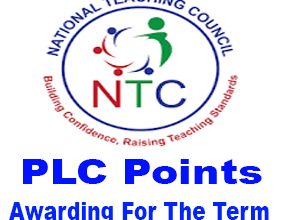
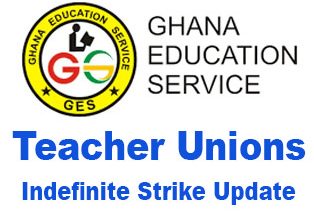
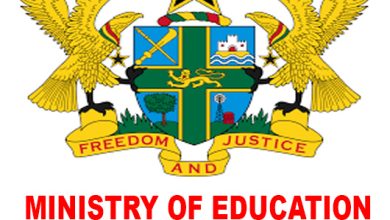
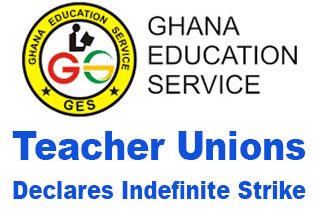
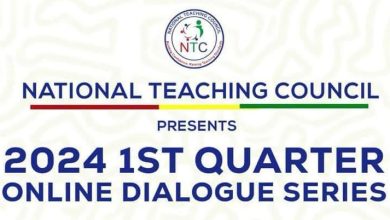
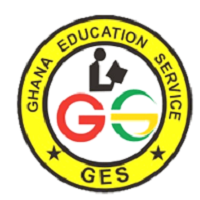

An explicit explicated and a resplendent inkling been summarized
Good work done
Good